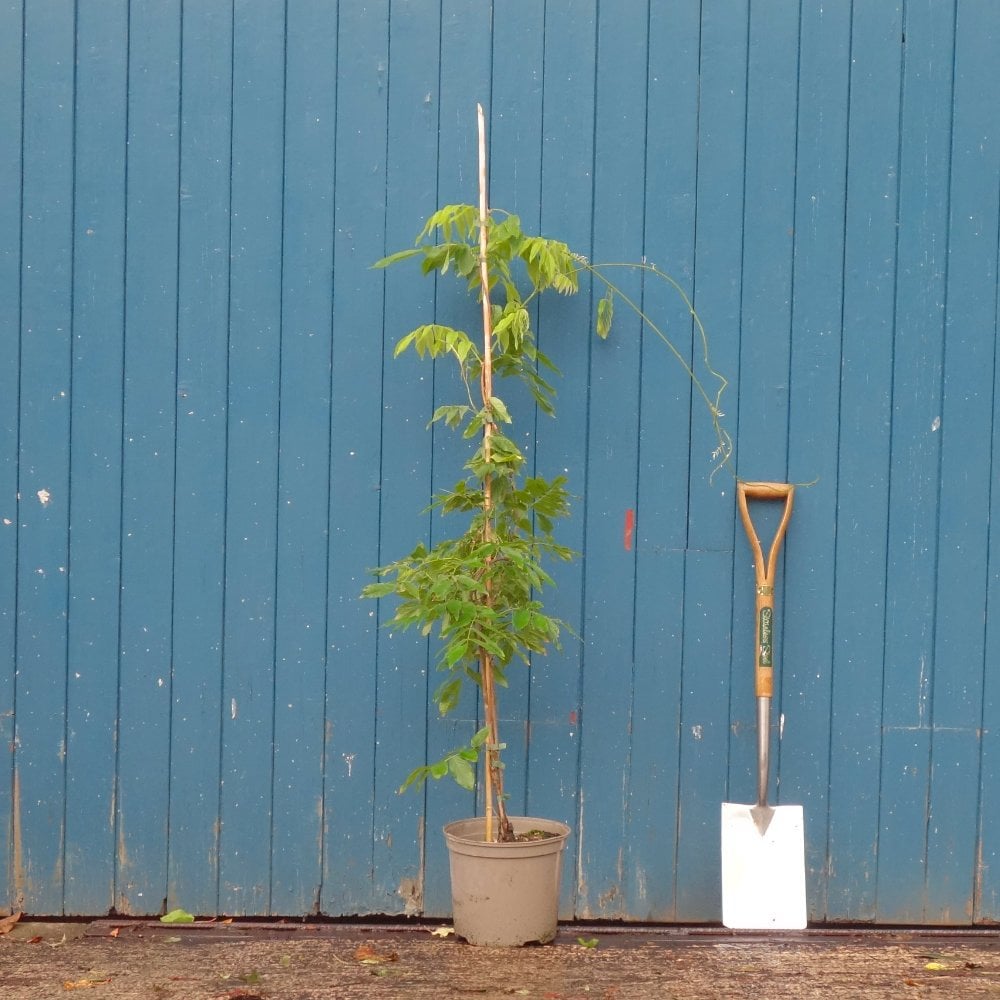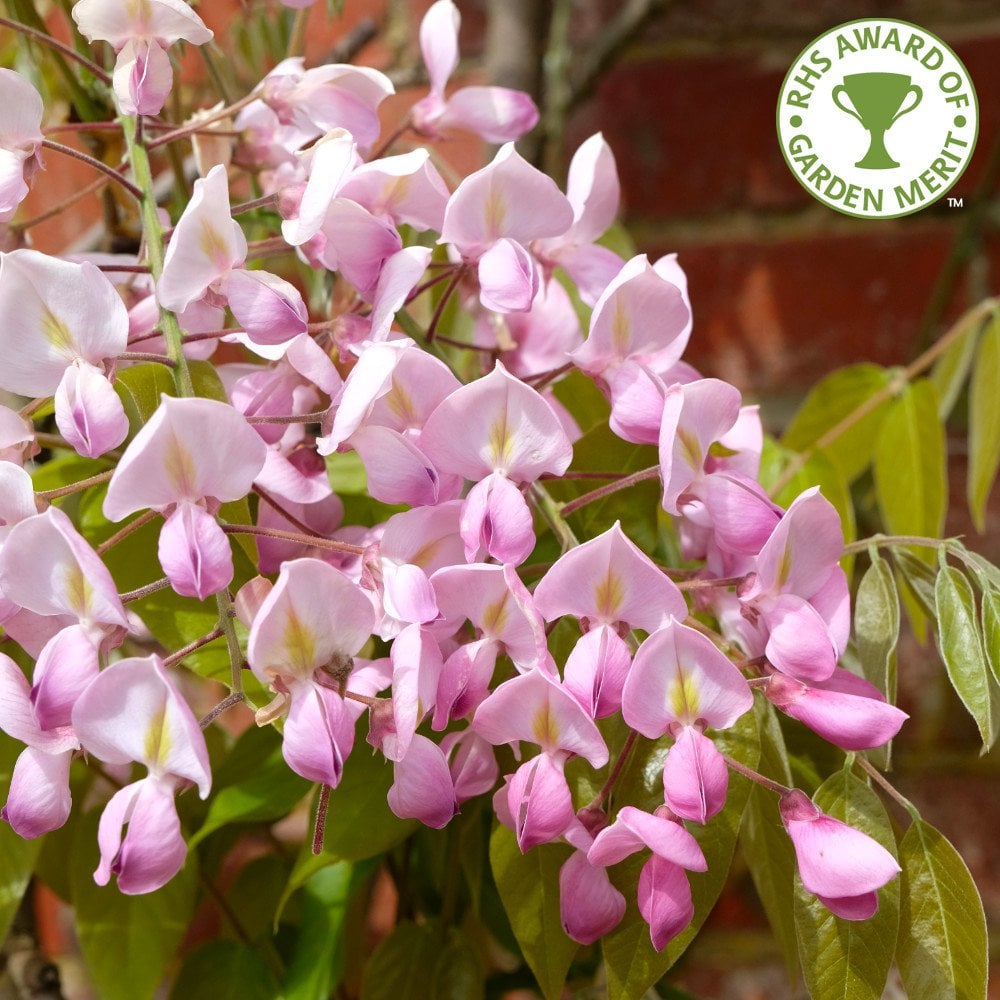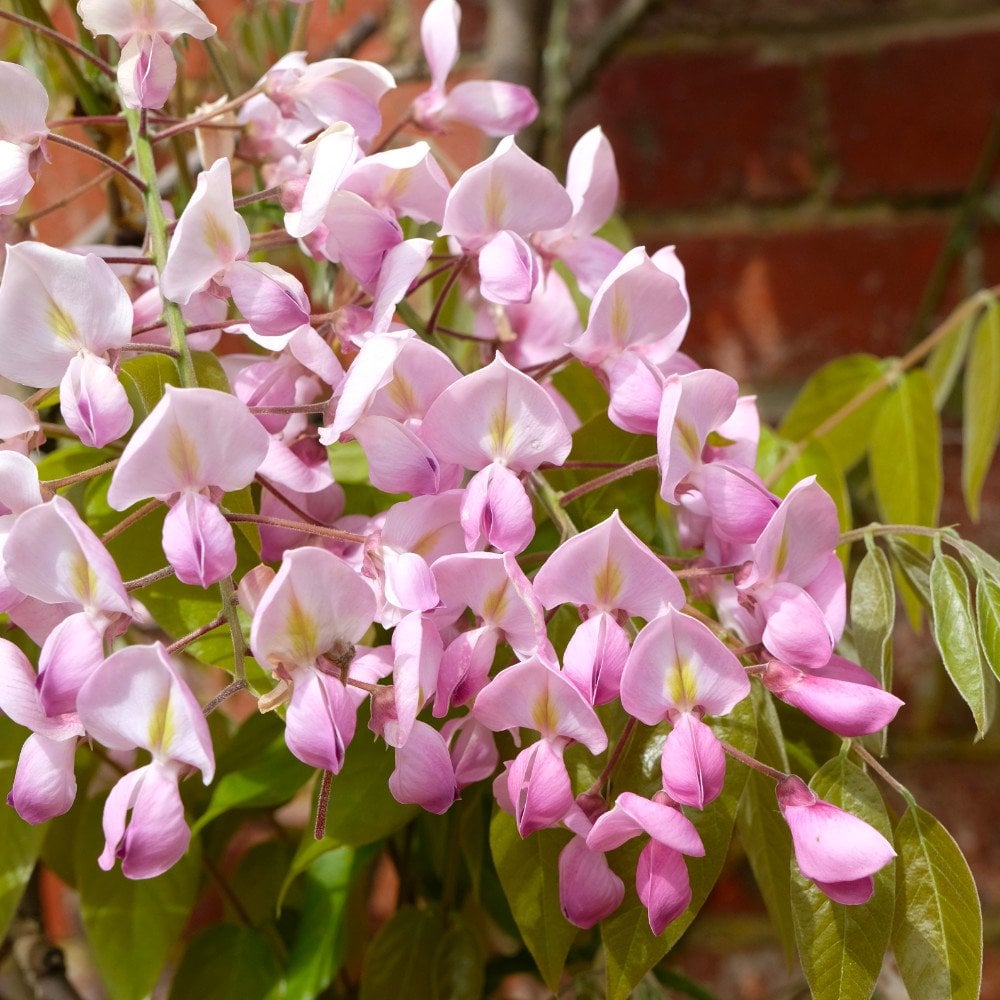Wisteria brachybotrys 'Showa-Beni' Tree
Wisteria brachybotrys 'Showa-Beni' Tree
Pink Silky Wisteria
Climber, 150-180cm, 7.5L pot
Despatched within 2-4 weeks




Key features





Description
Wisteria brachybotrys 'Showa-beni' is a gorgeous twining climber, growing masses of pretty, soft pink flowers in early spring to late summer from dangling racemes that can reach up to 15cm in length. Highly fragrant, these flowers can be larger than most other Wisteria varieties and are very attractive to pollinators, making this tree an excellent choice for wildlife gardens. Seed pods emerge after flowering and are accompanied by soft, pinnate foliage.
Having won the prestigious RHS Award of Garden Merit for its reliability in the garden, Wisteria brachybotrys 'Showa-beni' makes for a truly spectacular tree when trained against climbing support such as a pergola, trellis or wall. A moist, well-draining soil and a sheltered, full sun is preferred, although 'Showa-beni' will tolerate partial shade as well. 'Showa-beni' is fast-growing and one of the larger Wisteria varieties available – you can expect an approximate height and spread of 12 x 8 metres in 20 years.
Enjoy the wonderful pink flowers earlier, as all our Wisteria are grafted and tend to flower younger than those grown from cuttings.
AKA Pink Silky Wisteria
| Small shrubs (1-3) | Young trees & 4+ small shrubs | Select semi-mature trees & shrubs (1-4) | All other mature trees (any quantity) | |
|---|---|---|---|---|
| Mainland UK ex. Scottish Highlands | £10 | £12 | £35 | from £55 |
| Scottish Highlands & the Islands | From £30 | |||
| Outside Mainland UK | Currently we are unable to deliver outside of Mainland UK | |||
Product Details
Key features





Description
Wisteria brachybotrys 'Showa-beni' is a gorgeous twining climber, growing masses of pretty, soft pink flowers in early spring to late summer from dangling racemes that can reach up to 15cm in length. Highly fragrant, these...
Wisteria brachybotrys 'Showa-beni' is a gorgeous twining climber, growing masses of pretty, soft pink flowers in early spring to late summer from dangling racemes that can reach up to 15cm in length. Highly fragrant, these flowers can be larger than most other Wisteria varieties and are very attractive to pollinators, making this tree an excellent choice for wildlife gardens. Seed pods emerge after flowering and are accompanied by soft, pinnate foliage.
Having won the prestigious RHS Award of Garden Merit for its reliability in the garden, Wisteria brachybotrys 'Showa-beni' makes for a truly spectacular tree when trained against climbing support such as a pergola, trellis or wall. A moist, well-draining soil and a sheltered, full sun is preferred, although 'Showa-beni' will tolerate partial shade as well. 'Showa-beni' is fast-growing and one of the larger Wisteria varieties available – you can expect an approximate height and spread of 12 x 8 metres in 20 years.
Enjoy the wonderful pink flowers earlier, as all our Wisteria are grafted and tend to flower younger than those grown from cuttings.
AKA Pink Silky Wisteria
Planting & Care
Delivery Information
| Small shrubs (1-3) | Young trees & 4+ small shrubs | Select semi-mature trees & shrubs (1-4) | All other mature trees (any quantity) | |
|---|---|---|---|---|
| Mainland UK ex. Scottish Highlands | £10 | £12 | £35 | from £55 |
| Scottish Highlands & the Islands | From £30 | |||
| Outside Mainland UK | Currently we are unable to deliver outside of Mainland UK | |||
MORE TO GROW YOUR GARDEN


















